Cutting the grass on a hilly section of your lawn can be tricky and potentially dangerous. For safe mowing, it is important to use the right equipment and pay attention to safety precautions. Ideally, if your yard is more than 1 foot steep, you should consider alternatives to mowing.
In this guide, we will outline the most critical steps to mow a steep hill. In the end, you will decide whether cutting grass on a steep incline is worth the effort or if you are better off resorting to other safer lawn care techniques.
Keep reading for tips on how to mow a steep hill.
1. Choose Suitable Mowing Equipment
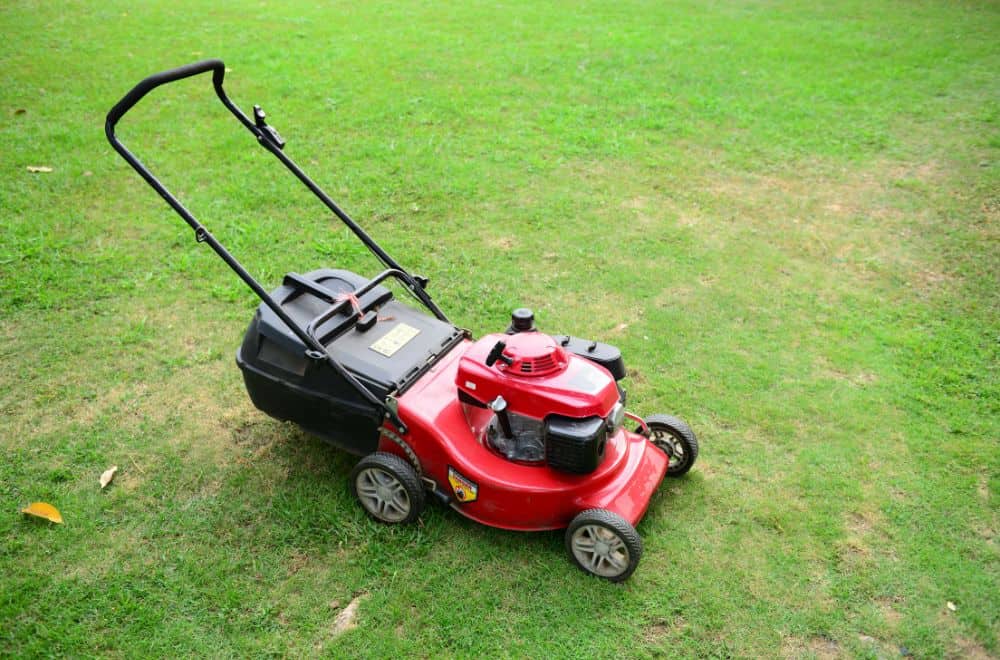
The first step to safely mow a hill is to start with the right mower. A self-propelled push lawn mower is the best choice for cutting grass on an uneven lawn.
A push mower is lighter in weight than a riding mower, which reduces the risk of the machine toppling or getting away while it is still running.
Another advantage of a self-propelled push mower is that most modern ones come with a safety handle. All you have to do is gently press the handle to halt the machine immediately.
Although self-propelled push mowers are better than riding mowers for cutting grass on a steep hill, a battery-powered push mower is an even better option for particularly steep sections of the lawn. These mowers are no-frills, lighter, and so much easier to push around hardscaping and other obstacles in the lawn.
If you have a riding mower, extra precaution is required when using this machine on a steep hill. Ideally, you should mow a steep hill from side to side, but this is not possible when you are using a riding mower—there is a real risk of the machine toppling over on its side and rolling down the hill, an incident that can cause serious injuries or even death.
Some special mowers are built to balance on a steep slope. However, most of these mowers are for commercial use and are expensively out of the reach of the ordinary lawn owner.
2. Perform a Pre-Mowing Inspection
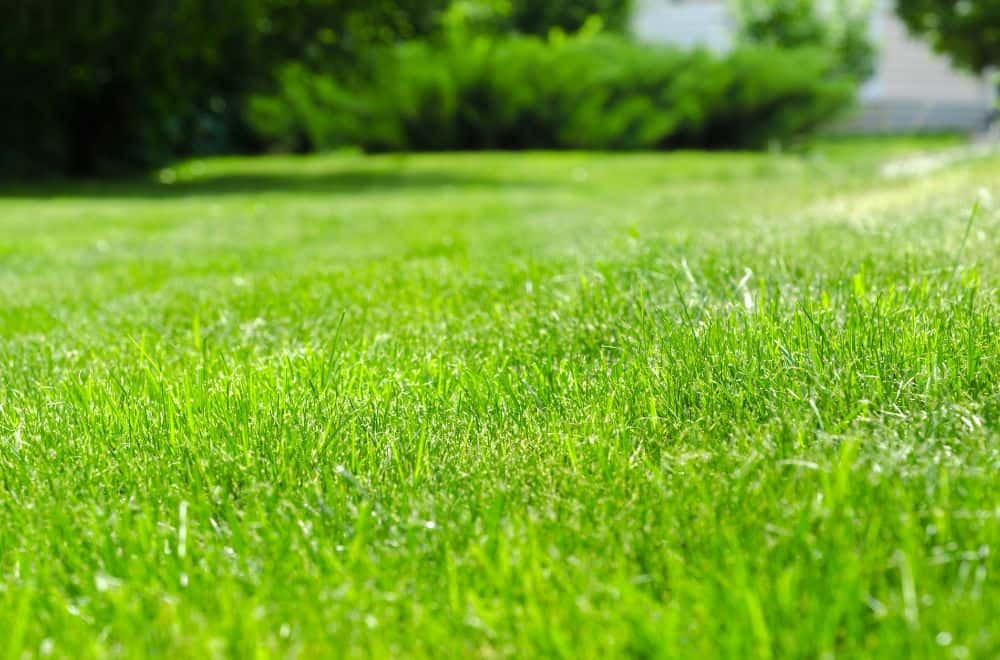
Rocks, holes, clumps of mud, and even toys on the lawn can easily trip the sturdiest of mowers and throw you off balance as you mow a hill.
Before starting the job, go over the area you want to mow. Check for and remove any obstacles. You should also keep an eye on hardscaping, such as ponds where the soil might be too loose to support the weight of a mower. You want to be very careful when mowing around such areas.
3. Mow At The Lowest Speed
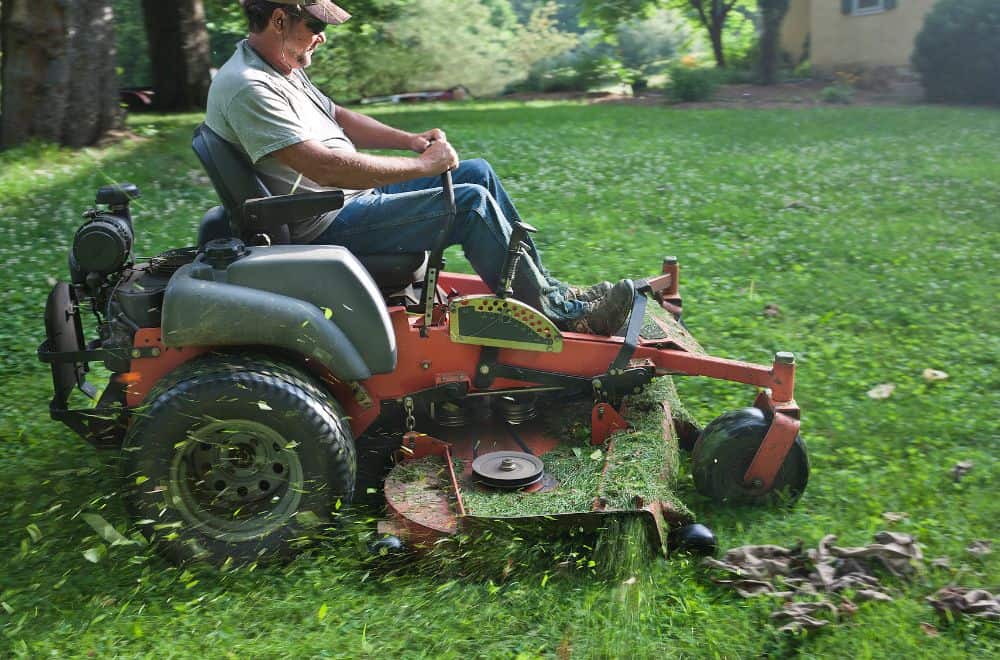
Before cutting the grass, check that the brakes work correctly to ensure stability and to prevent the mower from rolling backward as you drive up the hill.
Also, use a tire pressure gauge to check the air pressure of the mower’s tires. Follow the manufacturer’s recommendations to fill or deflate the tires with the right amount of air. It is also a good idea to check what the manual says concerning pushing or riding the mower on a steep slope.
If you must use a riding mower, be sure to dial down the speed. Use the lowest gear so that the mower moves at a pace that you can easily control.
A slow but steady speed is also recommended if you are using a push mower. Pushing the mower slowly when you are on an incline is not only safe. Balancing your speed will also give you a better after-cut and leave your grass healthy.
4. Raise The Deck Height
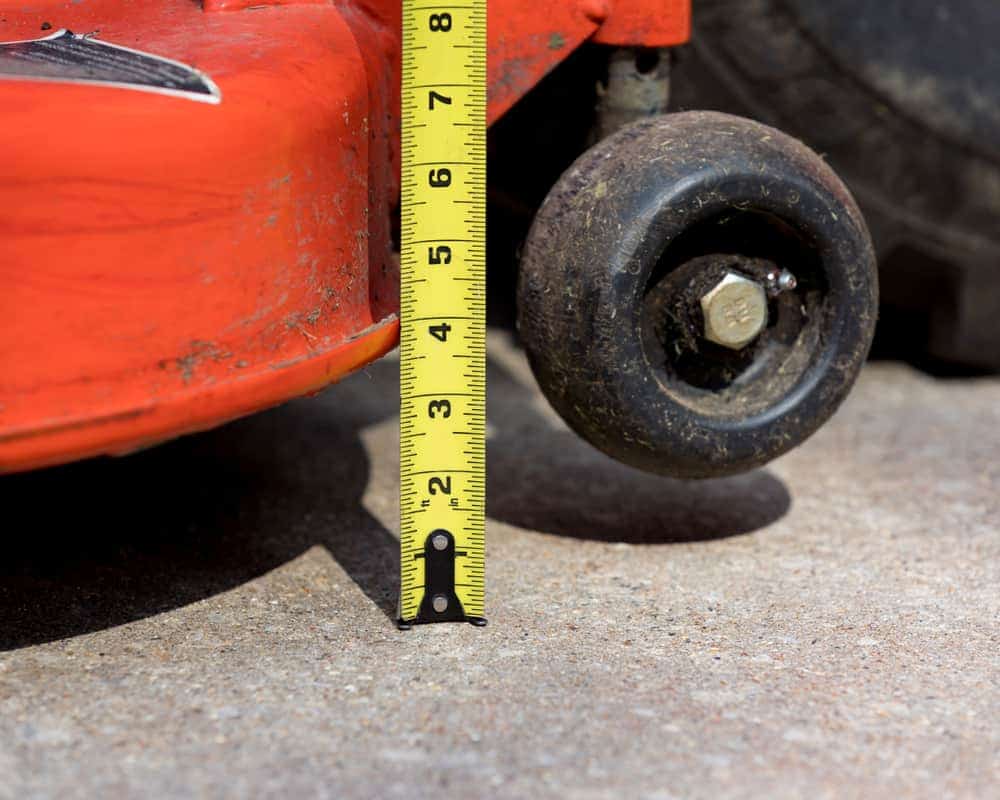
Another important adjustment you should make before mowing a steep lawn is to raise the mower deck. It can be pretty challenging to push and maneuver a mowing machine when the deck is too close to the ground.
As you cut grass on a steep incline, the last thing you want to do is struggle to push the mower. Any little moment you spend battling to push the mower forward can easily cause you to lose your balance and topple over the hill. A smooth forward momentum is what you should be after, and raising the mower deck makes this possible.
Mowing high is also good for the grass. Even when mowing a flat lawn, you should avoid cutting more than a third of the grass blades as this can damage the grass and result in stunted growth and browning. The best way to trim that upper third of your grass blades is to have your deck height at a higher setting.
In addition to this, keeping the grass slightly tall can help to stabilize the mower’s wheels as you move up and down a steep slope. The more grass there is, the less likely your mow will slip while cutting grass on an incline.
5. Use The Correct Mowing Technique
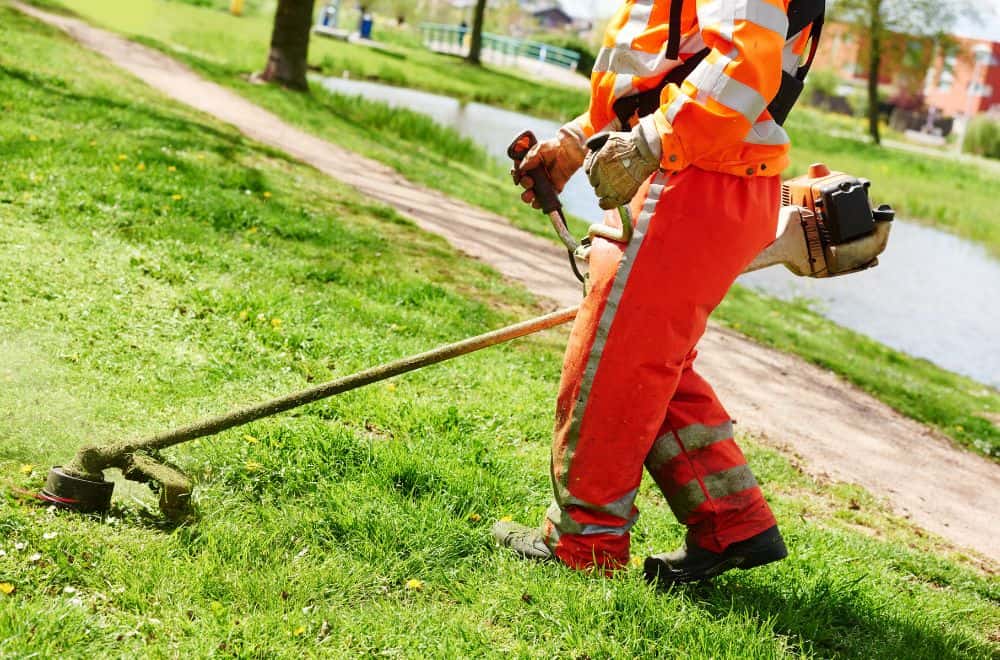
There are two ways to mow a steep hill, depending on the type of mower you are using.
Mowing a Steep Hill With a Push Mower
If you are using a push mower, the safest way to mow is to move from one side of the hill to the other as you go down. When you get to one end of the hill, do a U-turn and push the mower in the opposite direction toward the other end. Do this row by row until you mow the hill’s entire berth.
Never push your mower up and down the hill, as this presents a big safety concern. You will also expend less energy when you mow laterally than if you were to mow vertically.
A trick you can use to ease your job is to mow side to side but with a slight vertical incline. So instead of pushing the mower on a straight horizontal path, you can soften the angle a bit as though you were mowing on a slightly diagonal path. Doing this keeps you in control of the mower and your center of gravity.
Mowing a Steep Hill With a Riding Mower
Ideally, it would be best if you did not use a riding mower to cut grass on a very steep incline. If you have no other option, you need to mow up and down the incline and not side to side as recommended when using a push mower.
Attempting to balance a riding mower on the sides of an incline is very dangerous. Imagine trying to drive a vehicle on a vertical slope! The chances are that the machine will roll to its side and possibly fatally crush the operator.
If all you have is a riding mower to get the job done, it is best to mow downhill instead of driving the mower uphill. To do this, you will have to find a less steep ascent somewhere on the hill from where you can get back to the top and mow your way down again.
Extended Tips
- If you are not physically fit or are concerned about your physical stability, consider ditching the mower altogether and use a handheld brush trimmer to mow the grass on a steep hill. Brush trimmers might not cut grass as precisely as a mower, but they are lightweight and present fewer risks when working on an inclined lawn.
- Wear shoes that will give you enough traction to keep you from losing your footing as you navigate the mower on a steep incline. Consider buying a cleated pair of boots or sneakers for your mowing errands—they are worth the investment.
- Tend to the hilly part of your lawn more regularly. When you mow frequently, you will not have to expend a lot of energy on this part of the yard. Leaving the grass on a hill to grow too long will force you to play a dangerous balancing game with your mower.
- Wait to mow when the climatic conditions are right. Cutting grass on a steep hill is already challenging, and doing it when it is rainy or the grass is wet makes it even more dangerous due to the risk of slipping.
- Consider converting the hilly side of your lawn into a meadow. You will have a beautiful landscape, not to mention the benefits of biodiversity right in your backyard, without the hassle of cutting and maintaining lawn grass.
Prioritize Your Safety As You Mow A Steep Hill
A hill in your lawn can be both a blessing and a challenge. It can add to the lawn’s aesthetic appeal but keeping this area in tip-top condition is quite tricky. It is crucial that you take a safety-first approach when you decide to mow a steep hill.
Choose the right mower, preferably a rotary or self-propelle push mower, as you will have more control. More importantly, follow the right mowing technique as we have recommend and you should successfully keep the grass on your hill well maintained.
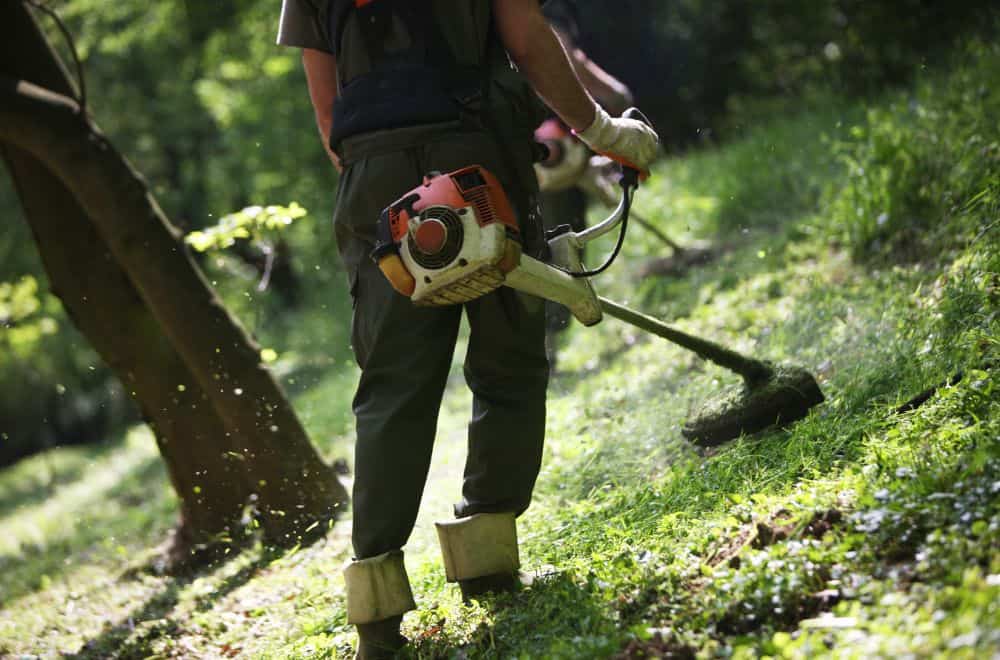
Leave a comment